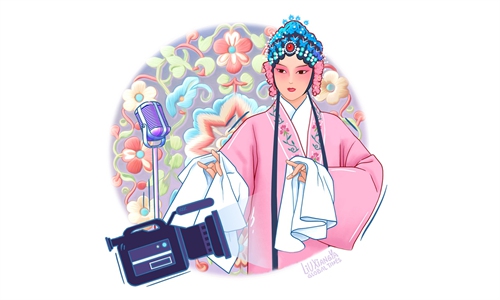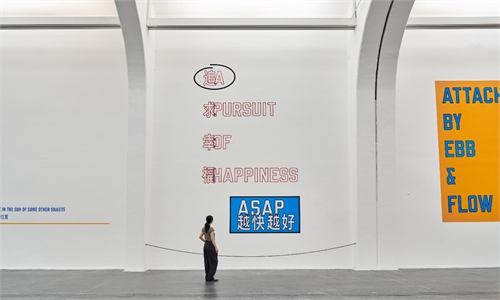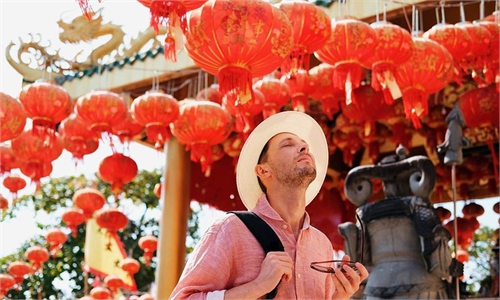ARTS / CULTURE & LEISURE
Art for people: A decade of Chinese artists creating works with ‘bones, morality and warmth’
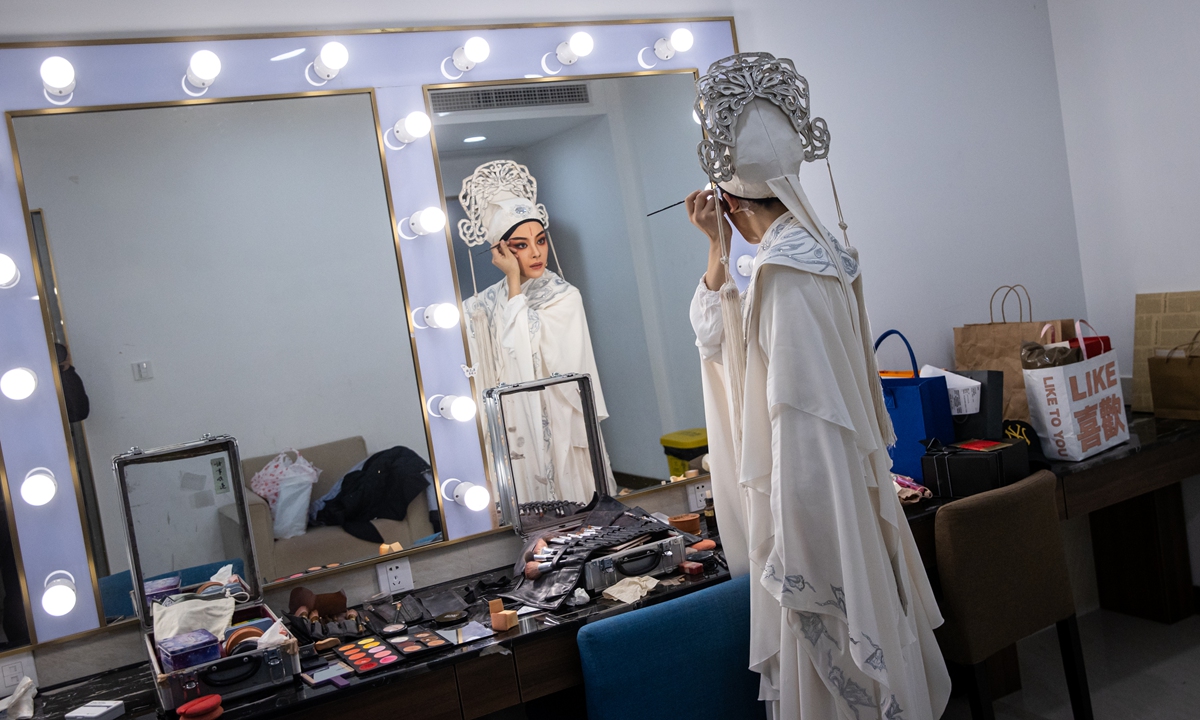
Yueju Opera actress Chen Lijun applies makeup backstage. Photo: VCG
Editor's Note:
"Socialist literature and art is, in essence, the literature and art of the people," said Xi Jinping, general secretary of the Communist Party of China (CPC) Central Committee and Chinese president, at a symposium on literature and art in Beijing on October 15, 2014.
President Xi urged writers and artists to follow a people-centered approach in literature and art creation and produce more outstanding works that disseminate contemporary Chinese values, embody Chinese culture and reflect the Chinese people's aesthetic pursuits.
Ten years on, China's art scene has witnessed remarkable achievements across various domains, producing a lot of outstanding works that align with this people-centered approach. These creations reflect the living conditions and spiritual pursuits of the Chinese people and showcase the rapid development and cultural diversity of Chinese society.
In this issue, Global Times reporters Chen Xi, Xu Liuliu and Wu Jie explore various lively practices in various mediums to see how the concept of "put the people's interest in first place" has boosted art creation and provided the public the best "food for thought" over the past decade.
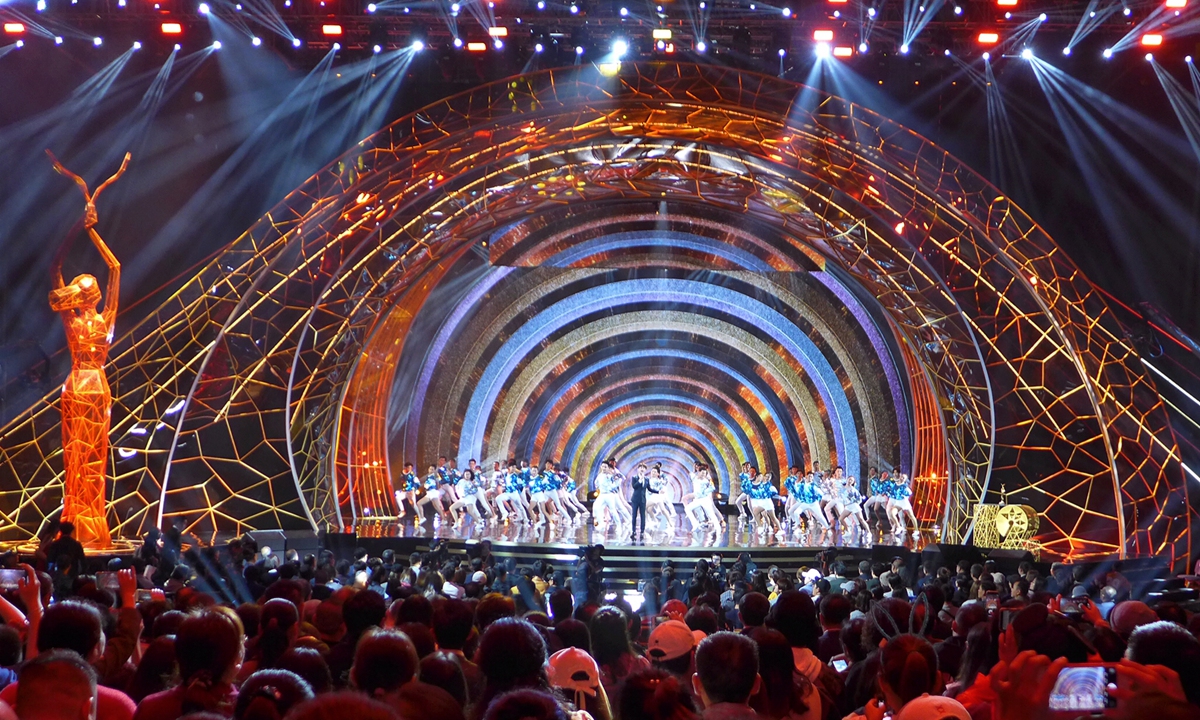
Golden Eagle TV Art Festival Photo: VCG
At the recently concluded China TV Golden Eagle Awards, three Chinese TV series with stories crafted by renowned scriptwriter Liang Zhenhua garnered prestigious awards. Among the awards, Liang had been nominated for Best Screenwriter for Welcome to Milele, a TV drama centered on China-Africa medical cooperation.
Liang told the Global Times that it was a big honor for him since the Golden Eagle Awards are partially determined by public votes. He was particularly pleased that the audiences have resonated with his storytelling.
The China TV Golden Eagle Awards, one of three main national award ceremonies recognizing excellence in the Chinese television industry, are highly regarded within China as a beacon for creating art that serves the people. It is the only nationally televised art award selected through expert recommendations and audience participation.
Reflecting on the creation of Welcome to Milele, Liang recounted an indelible experience. In order to authentically portray how Chinese medical teams extend healing hands in Africa and forge deep bonds with local communities, Liang and his team conducted a month-long research trip to Africa, preceded by nearly a year of interviews with hundreds of Chinese medical professionals who worked in Africa.
The in-depth research in Africa involved visits to three medical teams and five hospitals, and observation of over eight surgical procedures. These in-depth explorations provided invaluable insights, leading to substantial narrative revisions and enhancements that grounded the story in realism.
"It's the small yet profound real-life stories that bring vibrancy to the characters in the drama," he said.
For Liang, crafting stories that resonate with the audience requires the creator to immerse themselves in their lives and use the appropriate artistic forms to represent them.
Looking back on his more than a decade career as a scriptwriter, Liang recalled, "Initially, I focused on how to make stories captivating and how they could be used to shape interesting characters." However, in recent years, he has placed greater emphasis on character development, particularly how characters are defined by their specific eras and their connections to it.
The award-winning series Blossoms Shanghai, The Long Season, and Wild Bloom are all period dramas that topped the trending lists during their broadcasts, with their storylines and characters receiving big acclaim from Chinese audiences.
"As creators of art, we share a common mission: to refine our craft, engage in dialogue with the times, and integrate contemporary aesthetic sensibilities," said Liang.
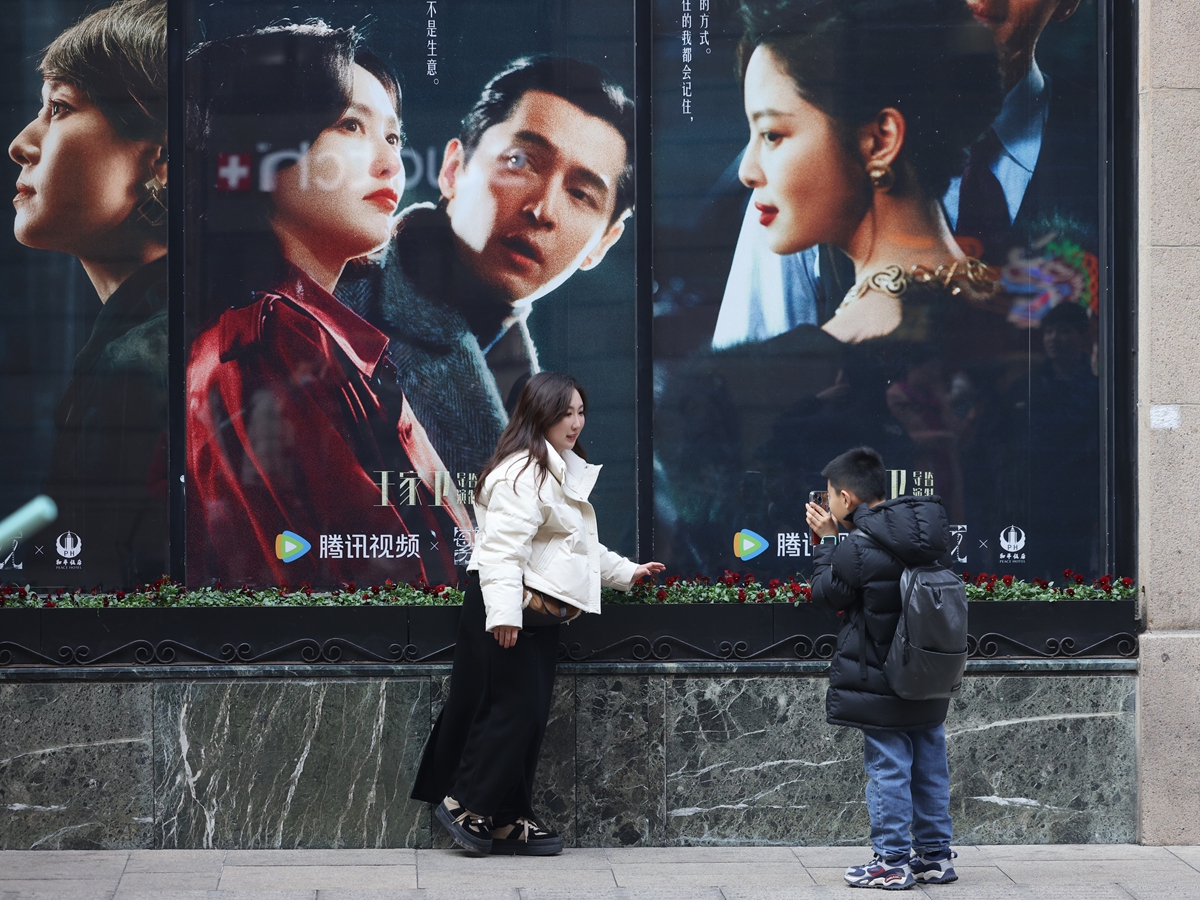
People take photos before posters of the popular TV series Blossoms Shanghai in Shanghai. Photo: VCG
Tradition and innovation
Artists should be innovative and put the social benefits of their works before everything else, President Xi Jinping said at the symposium on literature and art in Beijing on October 15, 2014, adding that good art is intellectually and artistically successful as well as popular among the public.
He noted that traditional Chinese culture is the lifeblood of China and an important source of socialist core values, as well as "a foundation for China to compete in the world."
Lu Jie, an actress from the Jingju Theater Company of Beijing, performed the classic Peking Opera piece The Drunken Concubine at the Beijing Performing Arts Centre on October 15. She noted after the show that Peking Opera is a cherished part of China's traditional culture, embodying the essence of China's artistic heritage.
"As young performers, it is our duty to diligently learn and inherit the invaluable artistic wealth passed down by veteran artists and present it to the public. At the same time, I believe that Peking Opera must adapt to the present era, keeping pace with the times to meet the evolving aesthetic demands of today's audiences. Therefore, I think inheritance and innovation complement each other - both are essential," said Lu.
Qin Yan, director of the Jingju Theatre Company of Beijing, said that preserving tradition and fostering innovation should be viewed as a unified whole, complementing and reinforcing each other.
"Preservation focuses on traditional Chinese culture, Chinese civilization, and the national spirit. It's an expression and steadfast commitment to the virtues of China. Innovation, on the other hand, is the driving force behind artistic development. Through continuous innovation, we aim to attract more young audiences to step into the theater, where they can experience and appreciate the beauty of Peking Opera," Qin said.
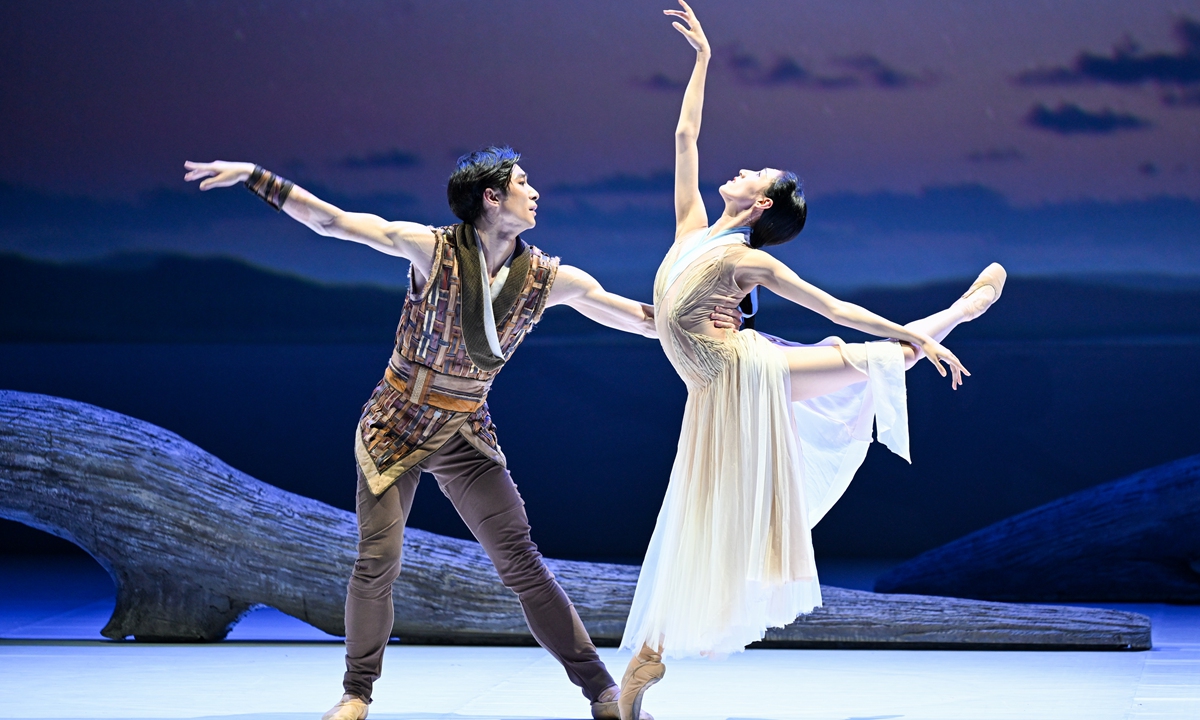
Performers dance during a dress rehearsal for the ballet Qixi in Shenyang, Northeast China's Liaoning Province. Photo: VCG
Best 'food for thought'At the symposium in 2014, Xi urged artists to create more works that have "bones, morality and warmth" - meaning works that advocate integrity, merits and compassion - in order to provide the public the best "food for thought" available.
One of the artists participating in the symposium in 2014, Xu Jiang, vice chairman of the China Federation of Literary and Art Circles and president of the China Oil Painting Society, still clearly remembers what he learned from the event.
"The biggest lesson the speech gave us is that, first of all, a high degree of understanding of outstanding works of the new era is needed," he said.
In the past 10 years, a number of outstanding paintings have been created that present "sincere people-centered consciousness, profound Chinese feelings and profound artistic thinking."
"Painters always cherish the traditional spirit of Chinese art and are committed to its inheritance and development. There are a large number of new and excellent works that vividly demonstrate the richness and strength of the art form of oil painting and inspire people to deeply understand the character of Chinese culture and the power of Chinese art," he added.
"President Xi's speech was deeply inspiring and greatly encouraging to us, and it also stimulated our thinking about literary and artistic creation," another symposium attendee, Fan Di'an, chairman of the China Artists Association and the Beijing Artists Association, told the Global Times.
He expressed that over the past decade, the Beijing Artists Association has produced a series of high-quality works that were bestowed with core socialist values in keeping with the spirit of the important speech at the symposium.
For Fan, the right time for literature and art refers to the era of comprehensive development of Chinese society, which is also the best period for literary and art workers to display their talents. "We must increase the creation of fine art pieces that are profound in thought, exquisite in artistry, and excellent in production."
At the Beijing Performing Arts Centre, an exhibition titled Art for People opened to the public in mid-October.
The art exhibition reflects on major milestones in the development of Chinese art since the founding of the People's Republic of China. Through historical events and iconic works such as the original records of songs like "The East Is Red" and "Ode to the Motherland," it highlights the remarkable achievements made in Chinese culture and art over the past decades.
Several artist representatives visiting the exhibition shared their feelings about the theme.
Zhang Yao, vice president of the National Centre for the Performing Arts (NCPA), told the Global Times that by adopting a people-oriented approach, the NCPA has been able to focus on both top-tier artistic creation and public education.
"While creating high-quality works, we remain committed to serving the people, promoting art education, and enhancing the public's aesthetic appreciation. Nearly 1,000 public benefit performances are held annually, reaching more than 5.5 million audience members," Zhang noted.
Shu Nan, a professor with the Beijing Film Academy and a renowned composer, said that staying connected to the people has helped him create many popular works.
"For many years, I have traveled to many parts of China to go among the people, drawing from the rich cultural nourishment of various ethnic groups. I believe this has been of immense help to me. If we bury ourselves in work in the office all day, we lose the ability to perceive the ever-changing dynamics of this era," said Shu.
"It's important to go among the people, to breathe the same air and share the same fate with them," Shu added.


